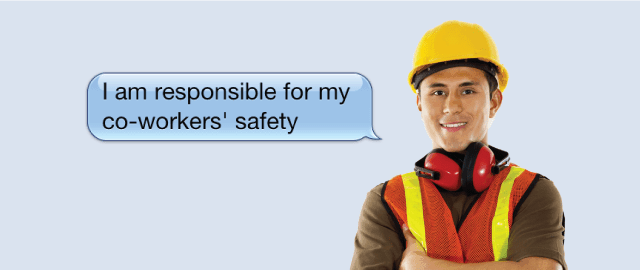On a job site, workplace safety is a concern of all employees. Along with time and budget, safety is a part of most jobs’ “Big Three”.
When employers feel they need to improve the safety of their workplace, they often invest in compliance and policing. Not only can this create a culture of blame but it also comes at a financial burden to the employer. Valuable resources are spent on policing when they could be spent on new equipment, training and professional development.
How can individual accountability make a workplace safer?
While accountability is often viewed as a responsibility of management, safety is a responsibility for every worker. However, few employees want to spend their time patrolling a job site looking for safety infractions or have a safety watchdog constantly watching over their shoulder. Don’t worry; policing other workers is not the method of accountability we are advocating.
We are talking about the type of accountability that favors individual initiative, open communication, personal motivation and co-worker support. When successful organizations build a culture of accountability into their safety practices, employees look out for each other, have each other’s back, speak up, take initiative and hold each other accountable. These attributes will not only lead to increased safety but will also trickle down to all other aspects of the organization.
Can one person make a difference?

One empowered employee who takes initiative in keeping his work area clean, tools put away, equipment in good-working order and is constantly aware of the safety of himself and co-workers is a perfect example of one person making a difference. Employees who show they care about their tools, work-space and equipment are showcasing that they also care about workplace safety and productivity.
While each employee can do their part to be responsible for their own tools and workplace, they can also be accountable for the safety of their co-workers. If you see a co-worker in a potentially unsafe situation, take the time to communicate with them. By relating a story of a previous injury, explaining the potentially unforeseen safety hazard and/or showing the co-worker that you care about their well being, you can be accountable for others without pointing fingers.
Accountability is also about positive feedback and reward. While an employee can take the initiative to point out an unsafe situation, they can also shine a spotlight on their fellow employees when they notice exceptional safety standards being exceeded. By recognizing and rewarding safe behaviour it will become an ingrained part of the job site culture.
Workplace safety is an area where all employees can play a leadership role. Accountability for the safety of you and your fellow employees is the responsibility of everyone on a job site and working in an environment that supports employee accountability, communication and quality helps ensure a safer and more productive workplace. By working together, supporting each other and rewarding safe behaviour, all employees can work safer knowing they have the support of their co-workers.










